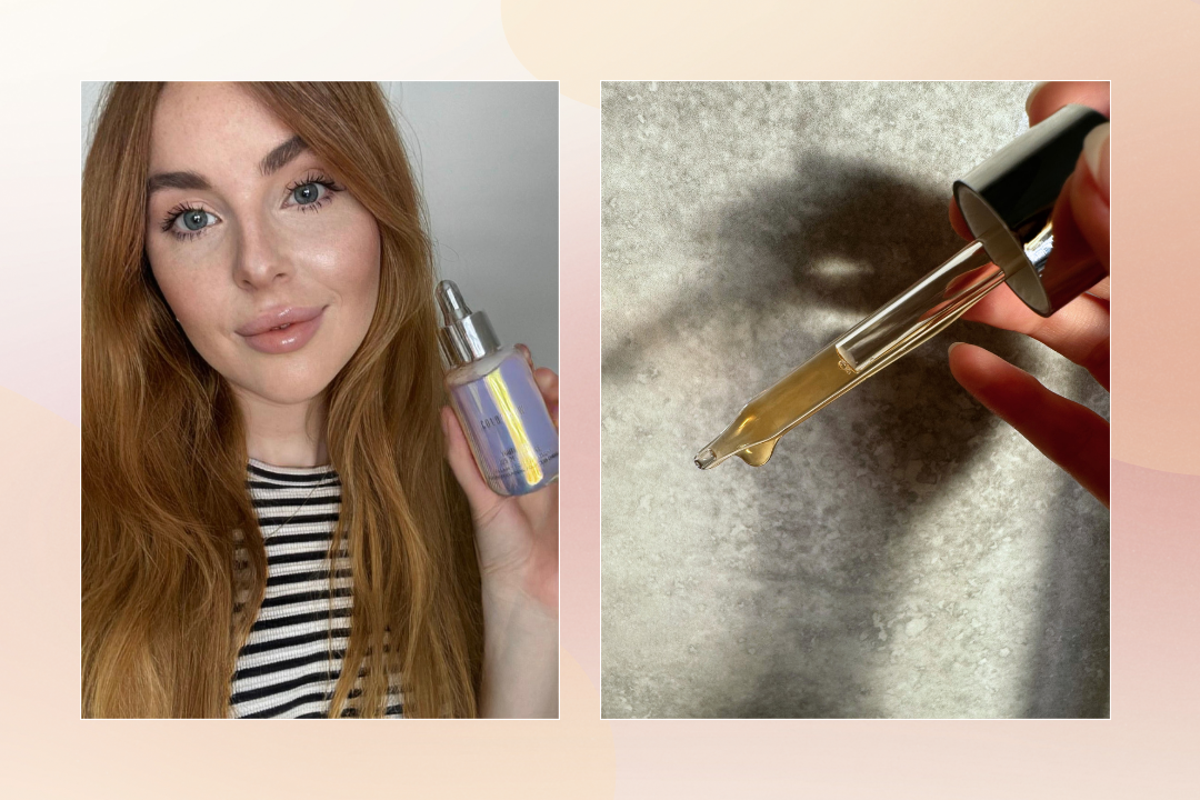
First impressions
My first impressions were pretty good. Unlike other hair oils, the consistency is thicker – more like a serum than an oil – so it doesn’t dribble everywhere, nor is it super greasy. It also has a pleasant barely there but clean smell which reminded me of the scent of a dentist’s office or a skin clinic. I personally love it, but it might just be a me thing.
The bottle is gorgeous with an iridescent shine, so it’s no surprise that it’s beloved on social media – it’s prime #bathroomshelfie material. But it was the formula itself that I was most interested in.
Formula
There are three hero ingredients in this blend. The first is pycnogenol, which is derived from tree bark. Due to its antioxidant, anti-inflammatory, and vasoactive properties, it’s typically used to treat venous and joint issues and it inhibits the breakdown of collagen, so the theory is it should prevent collagen loss from the skin on your scalp. It’s also intended to aid blood flow and aid hair growth, while also encouraging healthy cells and eliminating damage from free radicals.
All sounds good so far. However, I’ve never come across a hair or scalp treatment that uses pycnogenol in this way (usually you take it orally as a supplement) so I was curious to see whether it could make an impact.
It also contains procapil, which is widely used as an antidote to hair loss, particularly for those who suffer from alopecia or postpartum hair issues. I don’t lose that much hair on average but I do worry about this changing when I hit perimenopause. It’s a blend of oleanolic acid extracted from olive tree leaves, apigenin which is a bioflavonoid found in citrus fruits and biotinyl-GHK (a vitamin-derived peptide). It naturally boosts collagen production, improves circulation and (hair nerds will love this bit) inhibits dihydrotestosterone (DHT) by suppressing the enzyme 5-alpha-reductase. Essentially, this process prevents hair follicles from growing smaller.
The last wonder ingredient is amla, also known as the Indian gooseberry. It’s a powerful antioxidant that provides plenty of hydration. Ideal if you suffer from a flaky or dry scalp or any inflammation or irritation. I personally find that if I wear my hair up for too long it can start to make my head feel sore and in the winter months my skin is drier in general, so oiling really helps with that.
Application
The directions say to apply one to three droppers full of the solution to your hairline and natural parting, but I used about four droppers in each application. Applying to dry hair, I distributed the mixture evenly across my hairline and scalp, massaging it in. I’ve been told that massaging can stimulate the hair follicles and provide better circulation, so whether you’re oiling your head or not, it’s worth doing regularly.
I left the treatment to work its magic. It’s a leave-in solution, so unlike how other hair oils make your hair greasy, this one didn’t make it look too bad. I washed my hair the next day and waited for my next application. My routine involved doing the hair treatment every other day with the following day consisting of a hair wash, except on Sunday, when I left my hair alone.
Results
After the first week and a half, there were no signs of flakiness and my hair looked very shiny, which was a nice added bonus. By the third week, I noticed the baby hairs around my hairline looked a little stronger and healthier and by week four I was really feeling my hair.
